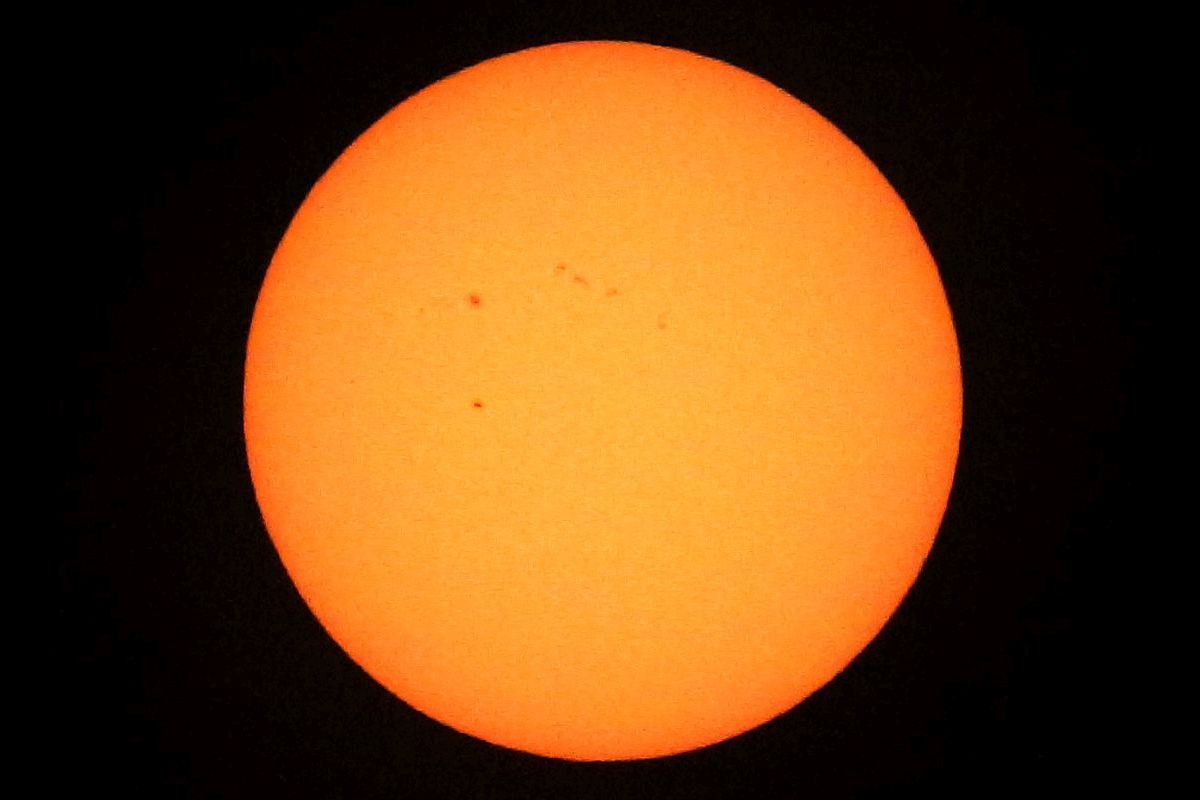In anticipation of the Annular Solar Eclipse on October 14, 2023, I got out the Canon SL1 camera and associated accessories to photograph the solar disk. I used the Canon EF 100-400mm lens along with a Thousand Oaks Optical threaded SolarLite® filter to get the (clickable) image above. I had to experiment with the camera settings to get the image and further had to adjust it using a photo processing app.
The setup resolved the solar disk and a couple or three sunspots currently visible; the two larger sunspots visible are 3297 and below that 3294. Those numbers are according to SpaceWeather.com.
As I mentioned above, I had to experiment with the camera settings a bit. Using the camera’s Programmed (P) setting, the images were overexposed. I switched to the shutter speed priority setting and tried several exposure times from 1/1000 second, 1/2000 second, and 1/4000 second. The latter, which is the fastest shutter speed on the camera, captured enough of the details needed to produce the image seen above and will certainly be good enough for the annular eclipse. For the total eclipse in April of 2024, it will be necessary to remove the attenuating filter during totality in order to capture the details of the solar limb and the spectacular appearance of the solar corona.

